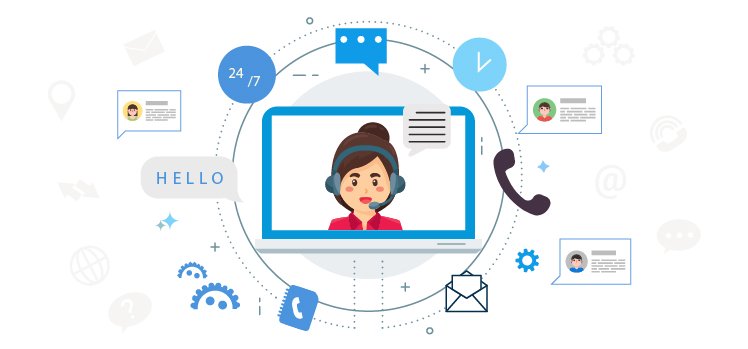CUSTOMER SERVICE DESK
- Home
- CUSTOMER SERVICE DESK
Customer Service Desk
A device or software tool called a customer service desk aids customer service teams in managing incoming service requests. The customer service desk, sometimes referred to as a support centre, is the sole point of contact for customer assistance in your company. This system makes it easier for your service team to interact with all parties involved in your business, including internal and external employees.
Any business nowadays can take advantage from a customer service desk, while the phrase “service desk” initially refers to service desks in IT support. In order to provide proactive customer care, your service desk is set up to handle both incidents—service disruptions—and service requests.

A help desk or call centre is a substitute to hiring a service desk. The service desk is more strategic, whereas the help desk may be considered tactical. A service desk typically includes components of the help desk, such as the ticketing system, which allows for the collaborative management of incoming requests. However, compared to a help desk, a service desk gives you greater control over the client and service delivery.
The Advantages of Using a Customer Service Desk.
Customer service desks give customer service staff extra resources to aid in resolving issues with your clients. Your representatives can offer individualised support and assess typical obstacles that are limiting your customers’ goals by using the tools at their disposal. Here are a few examples of how using a service desk will help your staff enhance how customers interact with your brand so you can see how they can be of assistance.
- Active Assistance.
The key advantage of having a service desk is being able to assist your clients in a proactive manner rather than just waiting for support tickets to arrive. This supports your team’s efforts to fulfil your organisation’s mission to be a customer-centric business.
- Higher Productivity.
By allocating tickets to the appropriate agents, the Customer service desk also assists you in better organising and managing your tickets and fosters teamwork. You can classify your tickets, for instance, using meaningful words and phrases and designate their state as open, closed, or unresolved. In this manner, your reps may arrange their open cases quickly and assist other reps who are having trouble coming up with solutions. You may use functions like these to keep track of open cases and respond to clients in a timely manner because 42% of customers want businesses to answer their questions within an hour.
- Advance Reporting.
Your service desk may also help you track employee performance and evaluate your productivity. You can generate reports on which requests were closed on time after assigning them a due date and a closed date. Additionally, you can establish significant goals for yourself, such as completing high priority requests 100% of the time.
By releasing up more resources to go above and beyond for clients, your service desk software can show the value of customer service in your business. You can more efficiently prioritise activities by analysing ticket volumes for various concerns. Simple but recurrent problems can be added to the knowledge base. Even some of your internal procedures can be automated to do more in the same amount of time.
Features of the customer service desk.
The features a service desk should have for your company are listed below.
A service desk can offer a wide range of features.
- Inbox shared.
For all incoming customer issues, a shared inbox serves as the primary point of contact. Reps have access to this mailbox and can allocate open tickets to themselves or teammates.
- Service inquiry.
A customer service desk should be able to record routine new service requests, such as customisations or upgrades.
- Management of Incidents.
Technical problems like malfunctions and product bugs should be handled by a customer support desk.
- Problem Solving.
Additionally, your service desk has to be aware of the issues that are currently being addressed and the trouble spots.
- Change management.
Change management is a function that proactively addresses problems brought on by deliberate adjustments to services.
- Information Base.
From customer support tickets, your service desk should be able to build a self-service knowledge base. Customers now have a support self-service option thanks to this.
- Analysis and Reporting.
You should have thorough reporting and analysis capabilities on your service desk. You should be able to access information on crucial metrics that can help you enhance your customer service.
Guidelines for Boosting Your Customer Service Desk.
Customer care expertise and understanding are essential for delivering a top-notch support experience, say 62% of customers. Your customer service department will be helpful in this situation. To ensure that your customer care efforts are as effective as possible, match your service desk tools with your organisational objectives.
Additionally, you may use a service desk to specify escalation protocols so that agents are aware of what to do in the event of an urgent or critical issue. Your staff should be encouraged by these procedures to turn frequent ticket replies into self-service depth of knowledge material, which will lessen the amount of time spent answering the same questions.
Customers want quick digital responses, but it’s individualised care that keeps them coming back repeatedly. Give them a genuine mom-and-pop experience by offering customer care that goes above and beyond their expectations. Keep in mind that your customer service desk continues to be your most helpful point of contact with clients and functions more as a growth centre than a cost centre. It is a tool to aid in creating a client-focused organisation and proactive customer service.


